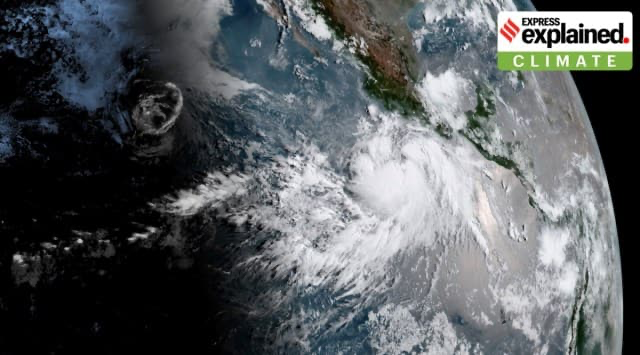Description

Disclaimer: Copyright infringement not intended.
Context
The unusual occurrence of Hurricane Hilary, a hurricane racing towards Southern California and Mexico's west coast.
Details
- The US experiences hurricanes, but they typically avoid the West Coast.
- Hurricane Hilary's approach towards Southern California and Mexico is unusual.
- California has rarely faced hurricane impacts, with offshore storms weakening before landfall.
Historical Context
- Hurricanes in California have remained offshore or as weakened tropical storms.
- Hurricane Kay in the previous year was the first tropical storm to impact California in 25 years.
- Hurricane Nora struck Southern California as a tropical storm in 1997.
- The only tropical storm with hurricane-force winds hitting Southern California was in 1858.
- Hurricane Hilary's trajectory through Southern California is a rarity.
Preparation and Risk
- Lack of hurricane experience in California and Mexico's west coast makes the situation novel and terrifying.
- Hurricane Hilary is predicted to make landfall in Mexico's Baja peninsula.
- Risk of landslides and flooding in Tijuana due to hilly terrain, population density, and poor infrastructure.
- Mexico deploys over 18,000 troops in anticipation of the storm.
- Anticipated impacts include record rainfall, strong winds, communication cuts, power loss, and urged preparedness measures.
Unusual Occurrence Explained
- The Pacific coast rarely experiences tropical storms and hurricanes due to ocean characteristics.
- Necessary condition for hurricane formation is ocean water above 26°C.
- Eastern Pacific waters are colder due to cold currents from higher latitudes, making hurricanes unlikely.
- Vertical wind shear is another factor; strong upper-level winds disrupt hurricane formation.
- Trade winds steer hurricanes towards the east coast, away from the west coast.
Climate Change's Influence
- Climate change is expected to increase hurricane frequency and intensity.
- Rising ocean temperatures due to greenhouse gas emissions contribute to more intense hurricanes.
- Higher sea surface temperatures cause marine heat waves, intensifying storms.
- Storms gather more water vapor and heat over warm oceans, leading to stronger winds and heavy rainfall.
El Nino's Impact
- El Nino, occurring after seven years, weakens vertical wind shear in the eastern Pacific.
- El Nino is abnormal warming of the equatorial Pacific Ocean, affecting global temperatures and ocean conditions.
|
PRACTICE QUESTION
Q) Examine the role of climate change in influencing the frequency and intensity of hurricanes, and how other atmospheric phenomena like El Nino can impact the occurrence of such events. (150 words)
|

https://indianexpress.com/article/explained/explained-climate/hurricane-hilary-unprecedented-8900032/











